
Sep '06 - Dec '06
Having now returned from working at the Smithsonian, I've been able to concentrate more on my thesis (which seems, schedule wise, to be second in importance to making sure our Solar Decathlon studio is moving along smoothly.)
As I mentioned previously, my thesis is entitled "Babylon Reconsidered: community development through rooftop urban agriculture". The goal, as I've stated in the abstract, is "a project that attempts to beautify and revitalize the impoverished urban neighborhood through the creation of a new urban realm, adapting rooftops into a network of public agricultural parks."
My specific site (or sites, I suppose) is yet somewhat nebulous, but, barring significant disagreement from my thesis committee, I think I've decided on a general area.
That area is historically known as The Northern Liberties, a section of the fabled Over-the-Rhine neighborhood centered on Findlay Market, the oldest continuously operated public market in Ohio. The Northern Liberties name comes from the district's reputation for licentious behavior (bootleggers, saloons, gambling houses, brothels etc.) in the wee hours of the 19th century before it was incorporated into Cincinnati proper. The canal that gave Over-the-Rhine it's name flowed directly to the west of this district, separating it from the West End, a neighborhood that was a vital center of Black culture, then the site of some of the nation's earliest public housing projects, and now a post-industrial mess of mechanic's shops, storage facilities and the main Sam Adams brewery . The canal served not only as a divider, but also as a connective commercial space. Now long gone, it was filled in some 80 years ago with the still-born subway and covered with Central Parkway, a significant, 6-lane artery that splits the two neighborhoods far more than any canal could.
So my thought is that this many-rooftop agricultural park could serve to stitch back together these two neighborhoods, feeding off of the rich cultural and architectural history, and the two existing farm-related uses of brewery and farmer's market.
Images from my visit to the area yesterday appear below. The first six are Over-the-Rhine, the 7th is Central Parkway, and the last few are the West End.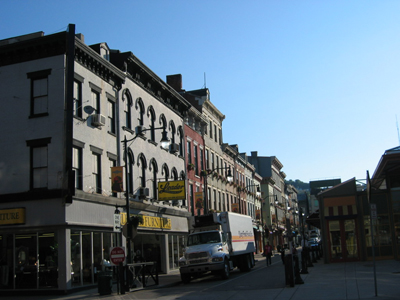
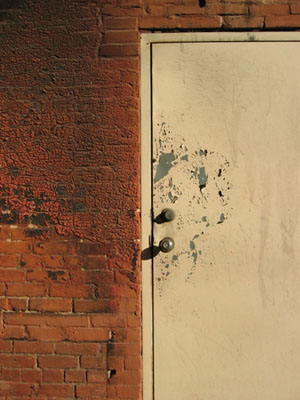
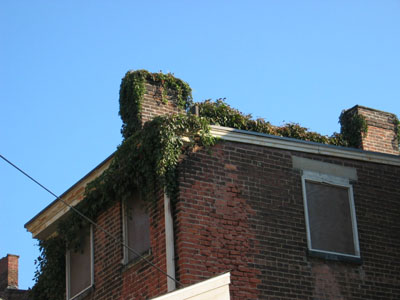
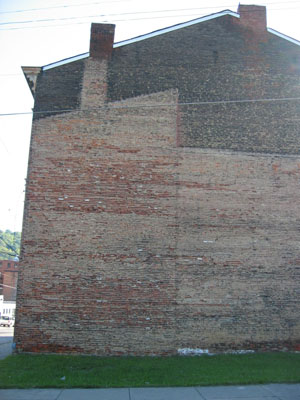
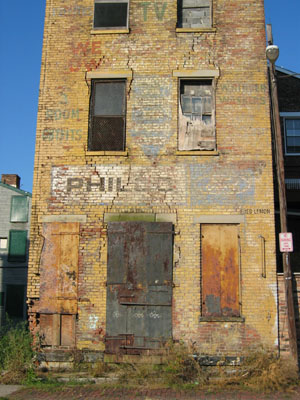

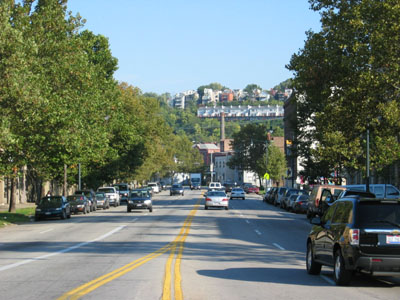


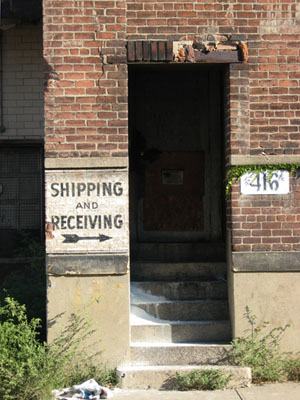
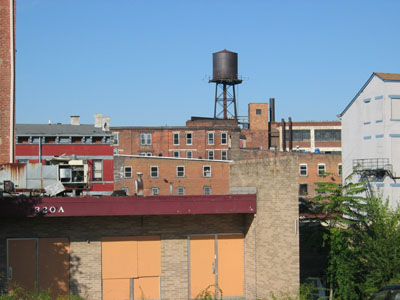



5 Comments
thought i might randomly see wonderk's car in one of those pix, but no such luck.
nice pix, chris. looking forward to seeing where you go with this project. are you looking primarily at publicly-owned land-bank type properties or just at ones you like? how do you see the mechanism of acquisition of properties and tying them together (air rights, etc) working? or are they satellites?
Sounds interesting! I'm guessing you've looked at the Viaduc des Arts in Paris? (And they're doing the same thing in NYC soon too.) Your project makes me think of rooftops everywhere and little green gardened bridges running everywhere through the city connecting them... mmm! Wouldn't that be cool?!
I read in a historical fiction book once that turn-of-the-century NYC was characterized by a split population of street-level people and rooftop people--there were people who basically lived their entire lives just running around from rooftop to rooftop instead of descending and using the streets. Because of the crowded tenements, the poorest people (who lived at the very top of the walkups) simply went up instead of down and did their business by rooftop commerce. The nuns and social workers who administered to such people also travelled by rooftop, as well as chimneysweeps, etc. So (assuming this bit was as well-researched as the rest of the book) it's not entirely absurd to stitch a city back together by its above-ground space!
another precedent for rooftop living would be the elevated pedestrian walkways (a.k.a. gerbil tunnels) that connect all of john portman's stuff in downtown atlanta (and other places)... although IMO this is an example of how this sort of thing can be detrimental on an urban scale as it takes activity away from the public realm of the street/sidewalk...
what is the relationship of the "neighborhood" to the street? have you asked this question. why do these parks need to be on the roof? why cant they be on the ground? doesnt seem to be a necessity to put them on the roof. doesnt look like density is an issue. i live in downtown indy and there are parks and greenspace all over the place. how does putting a park on the roof beautify a neighborhood if you cant even see it from the street?? the term tenament farmer comes to mind.
how does your project differ from the recent urbanvoids competition hosted by the van alen institute for north philly???
Are you the first to look at cinci's wastelands?
Nice pictures...
Block this user
Are you sure you want to block this user and hide all related comments throughout the site?
Archinect
This is your first comment on Archinect. Your comment will be visible once approved.